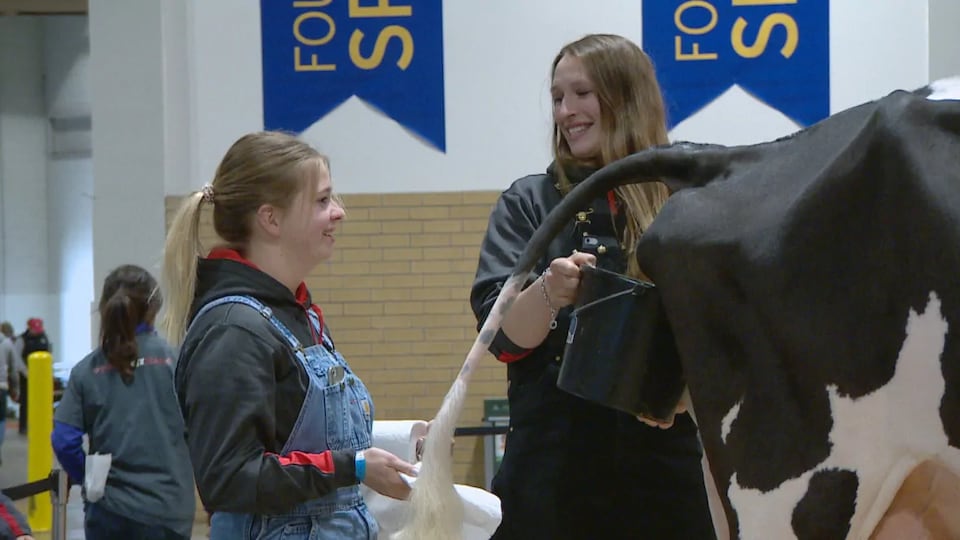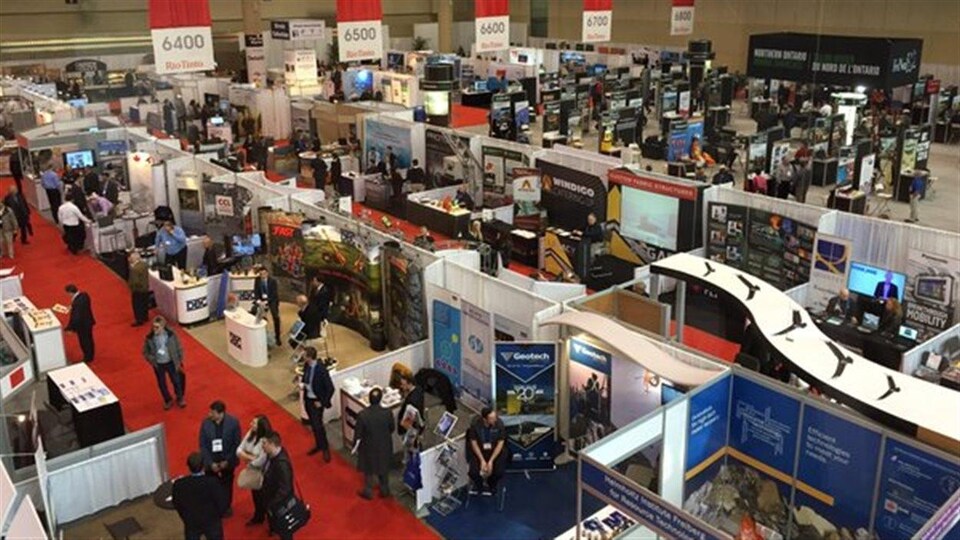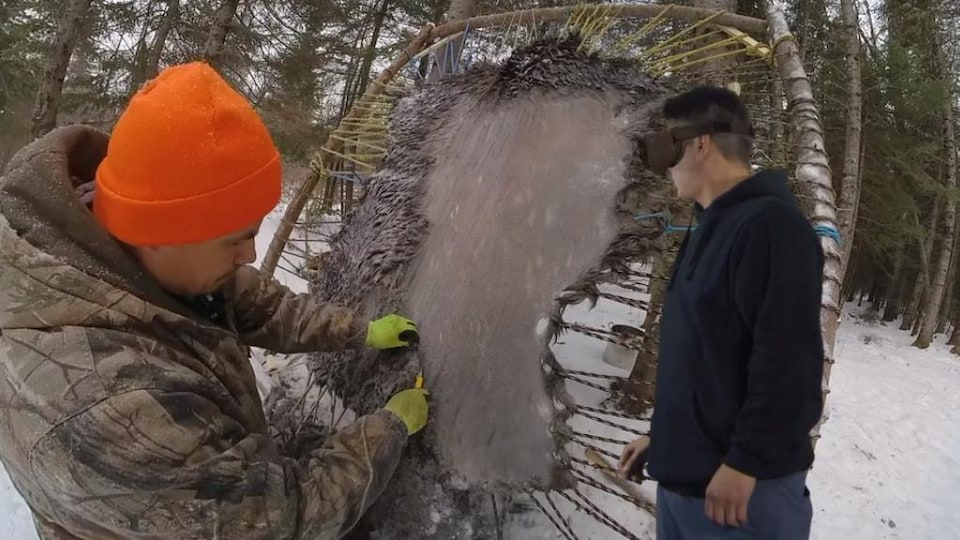Technology to the rescue of large gatherings during the pandemic | Coronavirus: Ontario
At the start of the pandemic in March 2020, organizers of the Royal Agricultural Winter Fair were well advanced in preparations for the 98th presentation of the event, which is usually held in Toronto in November.
With the imposition of health restrictions and the ban on large gatherings, it soon became apparent to the team that a new plan had to be established. According to the general manager of the Fair, Charlie Johnstone, the cancellation of the event was even considered.
But the pandemic has reignited the debate on food self-sufficiency across the country, adds Johnstone, and staying inactive for a whole year was no longer an option
for the Fair, which chose to seize this opportunity to respond to public concerns through its programming
.
We always say that you should never waste a good crisis. But how do we replicate the sounds, smells and visual aspect of the Fair that make it a special event? It’s impossible to do it virtually.
The Fair has opted for a different formula, focusing mainly on virtual talks and seminars through a platform it has purchased from a company specializing in the design of virtual fairs.
Virtual kiosks have also been set up for exhibitors and sellers of products from across the country who are used to participating in the fair. The event, however, took place without its popular equestrian competitions in November.
Four months later, Mr Johnstone claims the bet was successful, with some online conferences attracting up to 2,000 participants, including many foreigners
, which is 10 times more than the average level of participation in such conferences at in-person fairs.
Technology has allowed us to stay relevant and communicate to our target audience.
Given that the service it has purchased allows it, the Fair will also replicate the virtual experience next week – from March 23 to 25 – and again in June, with certain adjustments regarding themes addressed, particularly in the conferences.
Mr. Johnstone also indicates that because of this success, a virtual component could even be maintained in the future, after the relaxation of the sanitary restrictions.
The Prospectors and Developers Association of Canada has also just completed its 89th annual conference, which took place virtually. The face-to-face event typically attracts thousands of participants from over 130 countries who work primarily in the mining sector.
The Association’s Executive Director, Lisa McDonald, explains that her team evaluated more than 60 virtual platforms before making their choice. The one that was chosen, she reveals, was has an algorithm that allows people to meet other participants who are at the conference for similar reasons, but also tries to recreate the accidental encounters that one can have in a hallway between two sessions
.
It is certainly an area of technology that has exploded over the past year. Take your time to assess all the options, identify why people are attending your event, understand your target audience and make your choice based on all of this.
, she notes.
There is certainly no dearth of technological solutions.
Virtual reality in demand
In the west of the country, the Francophone Youth Council of British Columbia (CJFCB) used a virtual reality platform for the organization of the annual Francophone Youth Parliament of British Columbia, which was held at the end of February.
Virtual reality headsets were sent to 49 participants from across the province, so they could immerse themselves inside the BC Legislature, where they could not physically go due to the health restrictions.
According to the CJFCB event coordinator, Cloé Gautier, the primary objective was to make this experience more magical, as in previous years
, while also allowing several of the participants to experience virtual reality for the very first time.
But the virtual turn of the event also had logistical advantages.
Technology has allowed us to be more innovative. […] It also allowed us for young people from all over British Columbia to join us for this parliament, because we have to understand that we are quite limited financially, so it’s complicated to bring in people. young people in Victoria.
In Northern Ontario, the context of the pandemic also allowed the company ORIGIN, specializing in digital technologies, to embark on a brand new project. In collaboration with the Indigenous Tourism Ontario agency, which promotes Indigenous tourism, ORIGIN wants to offer Indigenous cultural experiences in virtual reality.
The rollout of the project is slated for this summer and is seen by Tourism Ontario as a way to help Indigenous entrepreneurs in the tourism industry who have been hit by the pandemic.
Improve user experience
For the director of ORIGIN, Paul Giles, the pandemic increased the urgency of planning alternatives
traditional means of organizing events.
Now everything is filtered according to the ability to virtually transpose while still keeping intact the purpose this thing is supposed to accomplish. From a philosophical point of view, for us this is the biggest question
, he underlines, adding moreover that a lot of work is done upstream by his company to avoid cultural appropriation.
But the project to promote Indigenous tourism is different from those that ORIGIN generally works on, whose original mission was to offer, through virtual reality, career exploration programs to students across Ontario and Canada. especially in indigenous communities.
[Avec ce projet], our target audience has changed and we are addressing everyone. Our design must take this into account, as well as accessibility issues. We need to develop technological solutions that are as accessible as possible.
Paul Giles, Director of the ORIGIN Company.
The accessibility of the many virtual platforms that have been designed, including those where several conferences are being held these days, is precisely an element thatwe must press
, according to Jean-Ambroise Vesac, professor of experiential and event design at the University of Quebec in Abitibi-Témiscamingue.
It’s great to do important things, but the people back home don’t necessarily have a great sound system or necessarily all the tech, so I think accessibility has to be key.
, explains the professor.
He still says observe maturity in this digital shift
performed by several major event organizers over the past year. A turn, he explains, which has certainly
raised new questions among designers of new platforms. How to create engagement with audiences, how to ensure that attention is well received
, he gives as examples.
Facilitate virtual meetings simpler
Having himself taken part in virtual conferences recently, Mr. Vesac believes that the platforms made available to the organizers of major events should also facilitate networking between participants.
Usually, when we go to a fair, it is done a bit on the corner. We meet someone, it’s nice, we have a coffee or something. And these elements, how do we put them back in the virtual? In my opinion, this is where there is something interesting
, he notes.
In some cases, when we go to an official conference, there are people who are at the forefront who are there, and there are circles that form around them. When we are a outsider, not quite from the middle, sometimes it can seem a little intriguing, a little difficult to access people. Me, I have a great hope that the fact of accessing people will be done in a more direct way, also simpler, of the digital world.
It’s not to reproduce what happens in the real world, but I think we have to try to make things more fun and more participatory to take advantage of what we already know about the capacity of video games. to transport us, to be present at a distance in a dimension of knowledge and sharing. And I believe that our regional realities need to network.
Improvements that must be made, according to the professor whose research focuses in part on the digital being-together, especially since he believes that this digital turn of large gatherings is not about to disappear.
We know that we must pay attention to ecology, we know that we must limit our things. It’s part of a realization that now this is the direction to go and I believe people, it suits them in a lot of aspects: no spending on gas and no hotel
, he says.
He also believes that this shift will lead to new employment opportunities in the digital mediation sector, therefore animate virtual rooms or online rooms
, which could also make it possible to replicate the dimension of chance
that we can more easily find in face-to-face meetings by chatting with people you don’t know
.










